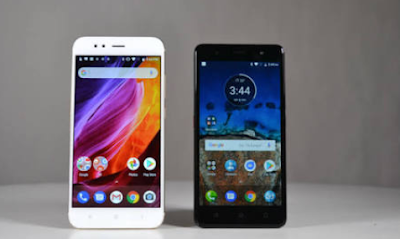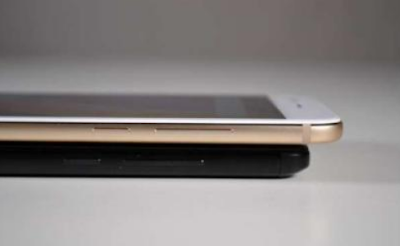 |
| Lenovo K8 Plus vs. Xiaomi MI A1 |
Stock Android gradually becoming a flavor, which is mostly for smartphone makers. Lenovo has recently adopted it, and the latest entry is Xiaomi, of course, the latter is only using Stock Android for one of its devices, but this gives us a chance to compare two smartphones, which in some ways Equally matching and stocks running with them are Android.
Lenovo's 8 Plus has just been launched in India, but we have a comparatively smaller comparison of the device, which is a comparative whip. Xiaomi Mi A1 is an Android One device, and comes with the promise of two Android updates, is scheduled for this year with Oreo.
While for Xiaomi, Stock Android is closed here, Lenovo has recently committed to providing Android because Google has intend to do it. Okay, almost Two phones are related to the budget range, however MI A1 pays you a few thousand rupees from Lenovo's budget meeting. How do they wonder against each other? Read on to find out
BUILD and DESIGN
Design is usually a subjective element, but we would be really surprised that someone looks at Lenovo's 8 plus above Mi A1. Both devices are playing dual cameras, although Xiaomi used Apple's horizontal placement, while Lenovo went for vertical placement on the back. K8 Plus is heavier than Mi A1, which can be useless, though it gives Lenovo's phone a sure promise for it. Not to say that Xiaomi's phone has not been made well, the light and slim body seems to be smooth on that phone, but not as strong as Lenovo's phone.
 |
| Lenovo K8 plus |
 |
| Xiaomi Mi A1 |
Look and feel on one side, there is not much to choose in terms of construction quality. They should be able to pick up some things, although this display remains weak element, as is normal with smartphones, overall, it will come down to see and feel, where Xiaomi took Lenovo into our thoughts.
Display
Here again, two phones are almost evenly matched, not just in the context of specifications, but also the real user experience. This difference comes in the touch experience, where the display of xiaomi seems somewhat sticky in comparison to Lenovo's smooth touch reaction. The K8 plus' Oleofobic coating comes in handy, making it perform well in the end user experience. But otherwise, color tone and saturation are fine on both displays. Neither is particularly lively, but they do not present issues in terms of viewing angles or other aspects of usability.
Performance
For theoretical purposes, MediaTek is at the same level as the Helio P20 Qualcomm Snapdragon 625. Therefore, seeing that both phones are running on Android phones, their performance should not be much different. However, this is not true from practical point of view. While Benchmark ranks equal to the device, MI A1 feels fast on practical terms. We can not clarify why this is so, but during the UI transition and app launch, Lenovo's 8 Plus seems to slow down. To be clear, the difference will be seen only in the side-by-side comparison, and Mi A1 is worth more than two phones, it really does not control things against Lenovo.
Stock Android
Both Lenovo and Xiaomi believe that buying a lot depends on how a large part of the consumer base runs on Android device on an Android device. Therefore, stock Android interface on these two smartphones is probably the figures in your decision.
The surprising thing here is that not only does the Xiaomi stock market, compared to Lenovo, the company's software is close to pure Android nogate. For example, Xiaomi has added three of its own apps and made changes to the camera app (because Android did not support dual cameras originally), but there really is no other change for the interface. On the other hand, a lot of icons have changed on the Lenovo device, and of course the camera app has also been changed for its dual-camera setup.
There are some pre-loaded apps on Lenovo's phone, however, if unneccessarily, you can uninstall all. You get some background apps from Motorola, while the Faasos app is pre-installed, as is Google Duo.
According to Google, both Xiaomi and Lenovo have confirmed the update of Android Oreo on these devices, although MI A1 is also going to be the first to get Android O update.
 |
Camera
Both phones supports dual cameras here, although Xiaomi uses two 12 MP sensors against Lenovo's 13 + 5 MP combination, both cameras use the sensor deeply, although Xiaomi's phone has a telephoto and wide-angle lens connection , Which gives him a better chance at the time of shooting. |
| Lenovo K8 Plus (Left) vs Xiaomi MI A1(Right) |
On the other hand, when both cameras are firing, MI A1 presents more details in pictures. Colors are better while shooting inside the house, although the difference is minor. Lenovo's 8 Plus has introduced better details in some indoor shots, but overall image quality is better on MI A1. The latter also produces bright photos under low light.
My Words....
Lenovo's 8 Plus and Xiaomi Mi A1 match quite well, and for those who want to save Rs 4000, K8 Plus looks like a reliable device until we have 8 batteries on our battery If the test is not run, then the total difference seems quite simple. Lenovo's 8 plus budget is for the buyer, while Xiaomi Mi A1 is better for those who want more premium devices and do not pay attention to spending more for it.

2 comments:
really usefull post....
thanks☺
Post a Comment